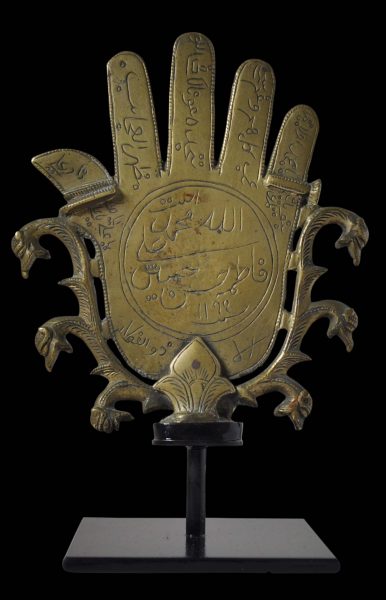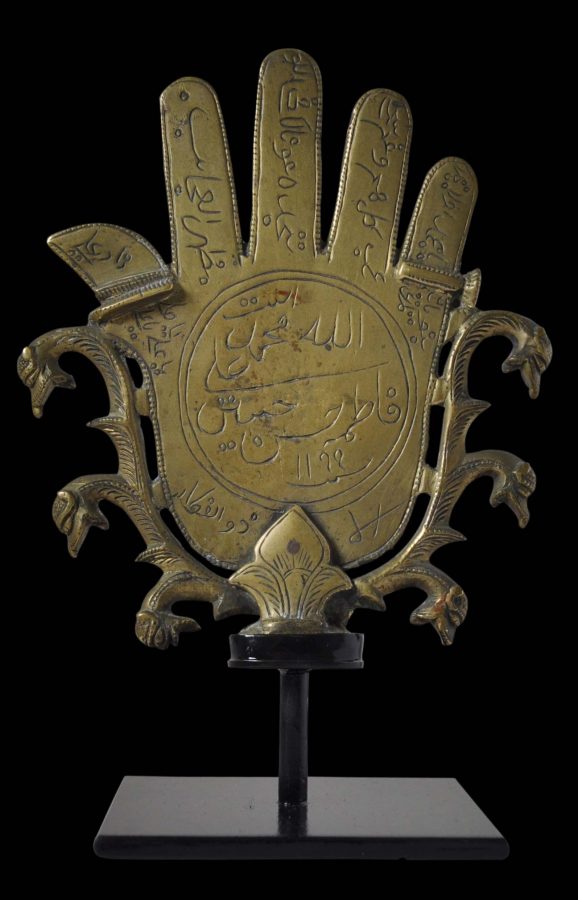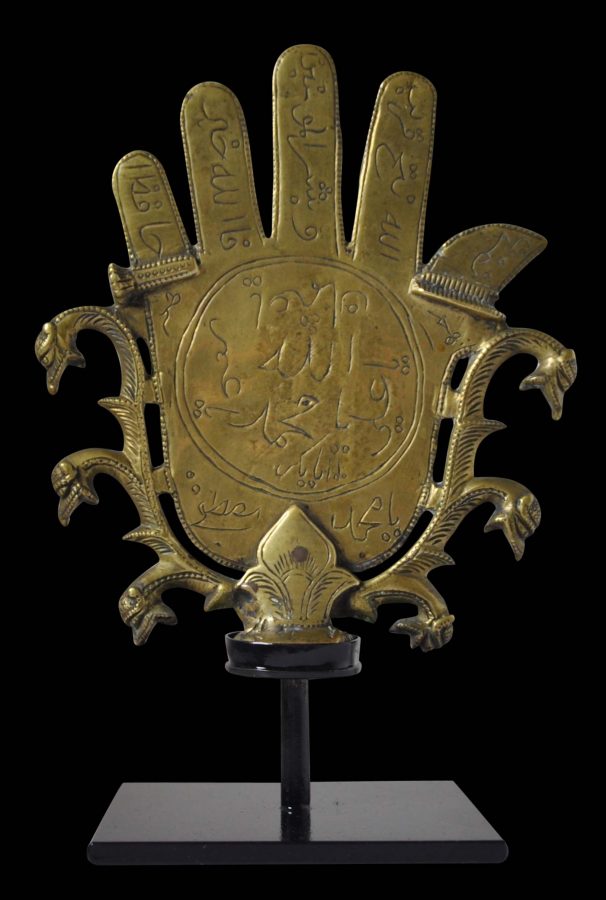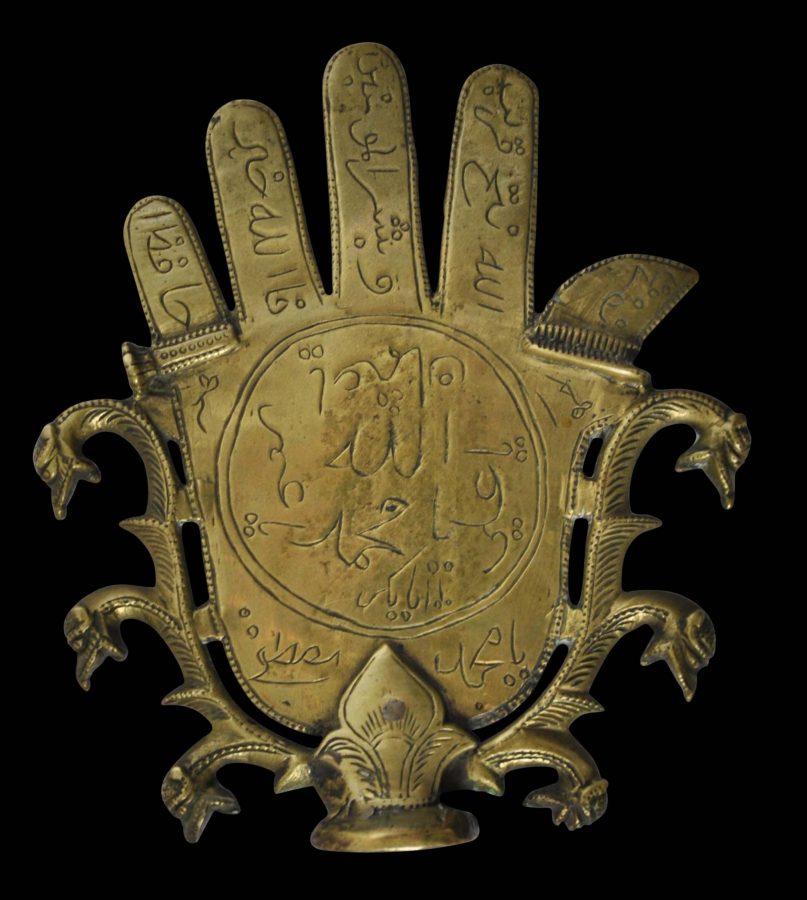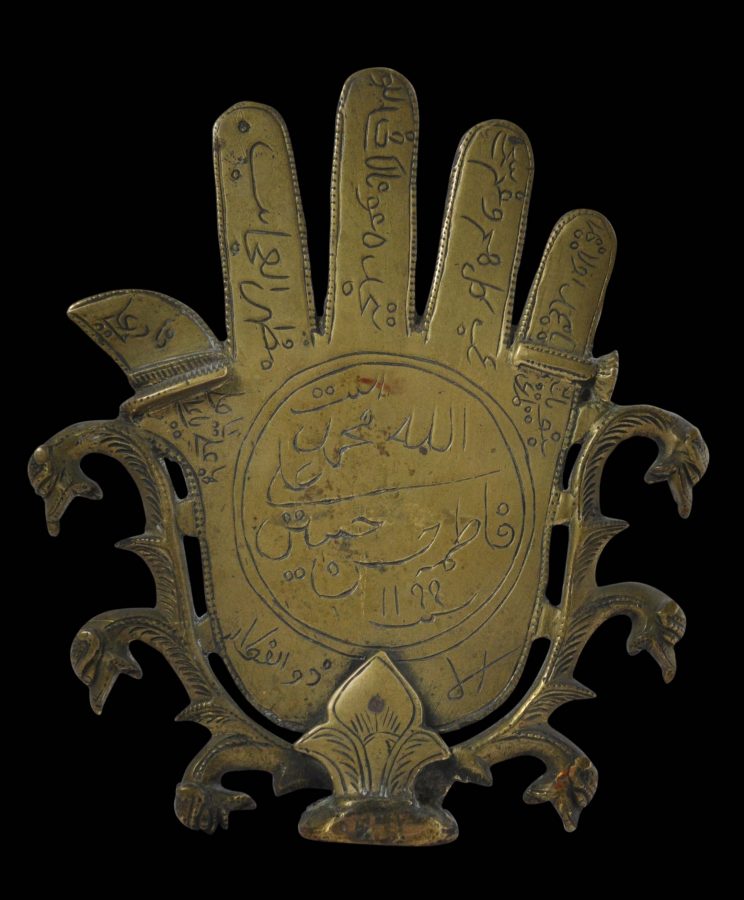This eighteenth century brass alam finial from the Shia Muslims of central India, is engraved both sides with script. It is also dated 1199 AH which approximates to 1784 AD.
The finial is in the shape of a protective hand. Both the thumb and little finger have been cast with rings, one of which has a floral bezel!
The hand is surrounded by a protective frame with three cast brass dragon-like makara heads on each side. The makara heads indicate clearly that this alam finial is Indian and almost certainly from the Deccan rather than say Persian.
The five fingers and thumb of the hand are said to symbolise Muhammad, Fatima, Ali, Husain and Hasan. Husain is a key figure for the Shia branch of Islam. Shia followers consider Husein, the grandson of The Prophet, to be the rightful heir to the caliphate. Instead, Husein was martyred. Shias mark the anniversary of his death with processions and other rituals. In the Deccan in central India, these processions featured the carrying aloft of brass religious standards or alams of a type that included the example here.
The alam finial here is in fine condition and is without losses or restoration. It sits atop a custom-made black metal stand.
References
Zebrowski, M., Gold, Silver & Bronze from Mughal India, Alexandria Press, 1997.


